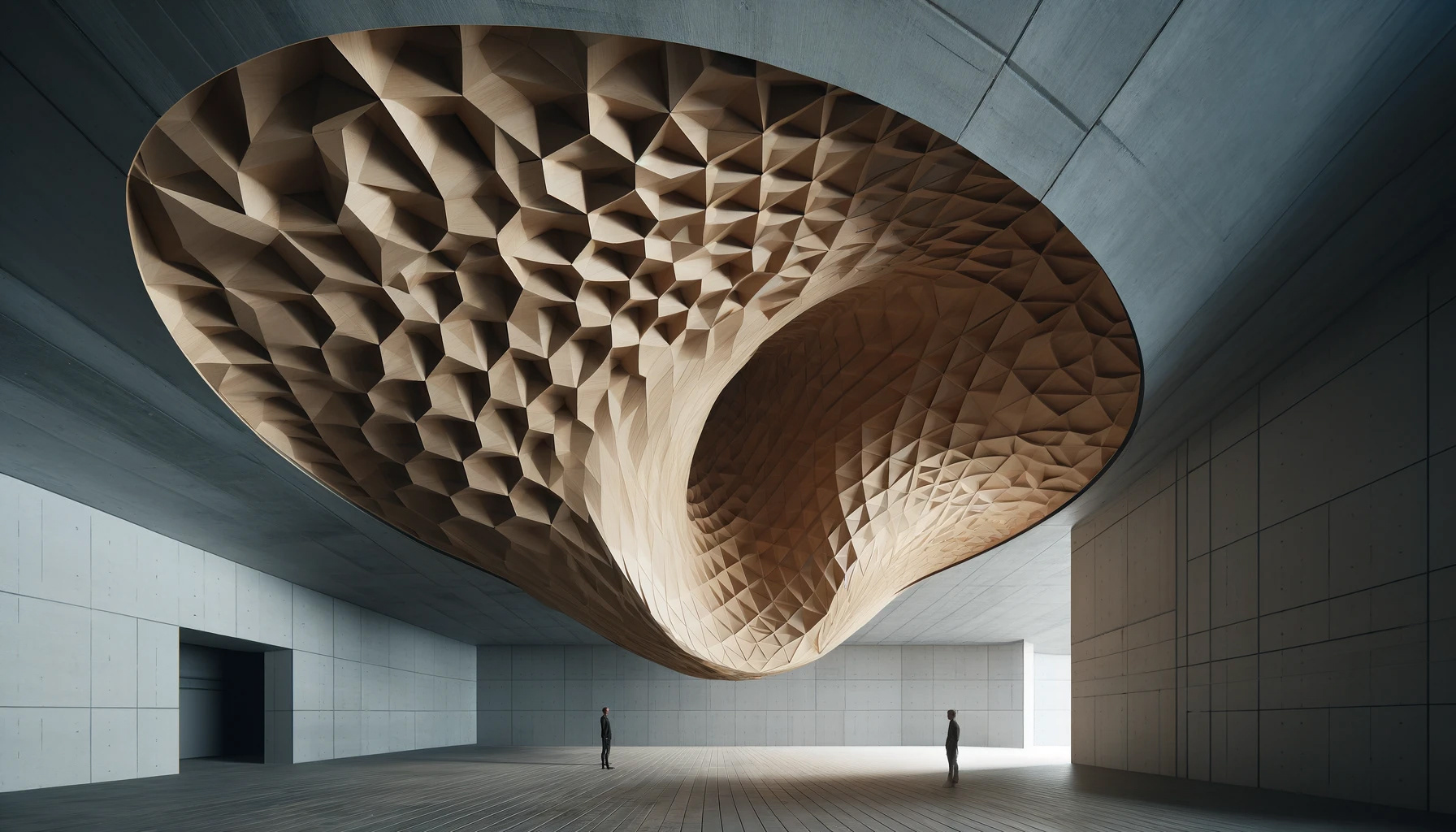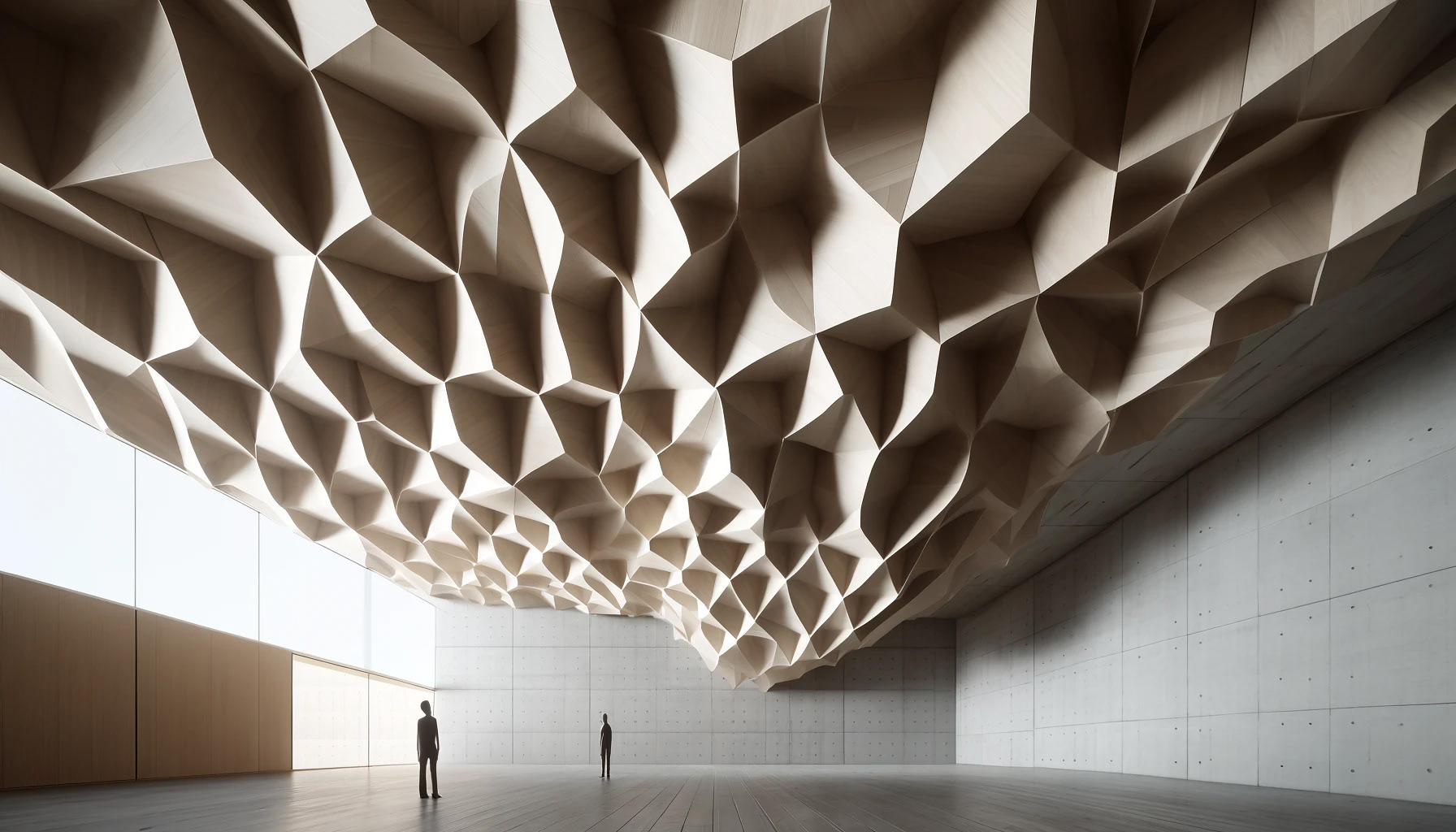Blur Building by Diller Scofidicio + Renfro - Visual metaphor for an all-encompassing diffuse environment
Sonic Envelopes
Active material-based acoustic management
The research project proposes using active acoustic management (AAM) with smart and adaptive materials that alter their acoustic properties in response to stimuli. These materials can modify sound transmission and absorption, potentially creating adaptive acoustic environments that change according to occupants’ needs. It will examine how such systems can shape acoustic interference and change sonic perception in architectural surroundings. By combining numerical simulations, experimental measurements, and user tests, the project aims to understand the influence of acoustics on human perception and how to shape it. This approach offers a dynamic solution to acoustic challenges in multi-functional spaces.
From an eye-centered to a sonic-centric environment
Active Acoustic Management (AAM)
AAM is an approach to manipulating sound properties in real-time based on ambient and user-defined requirements. Unlike static solutions, which offer fixed acoustic properties, AAM systems can respond dynamically to changes, ensuring that the acoustical conditions are continuously optimized. This research delves into the potential applications and benefits of AAM, especially when paired with shape-changing materials and geometries.
AAM is an approach to manipulating sound properties in real-time based on ambient and user-defined requirements. Unlike static solutions, which offer fixed acoustic properties, AAM systems can respond dynamically to changes, ensuring that the acoustical conditions are continuously optimized. This research delves into the potential applications and benefits of AAM, especially when paired with shape-changing materials and geometries.
Smart Materials and Their Role in AAM
Smart and programmable materials, at the heart of this research, possess the unique ability to alter their acoustic properties in response to external stimuli. Such materials can effectively modulate sound transmission and absorption rates, paving the way for truly adaptive acoustic environments that evolve according to the needs and preferences of the occupants. Imagine an office space during a busy workday. In the morning, the space might be bustling with conversations, phone calls, and team meetings, requiring a certain level of sound absorption to prevent noise build-up. As the day progresses and the office transitions to a quieter environment focused on individual tasks, the acoustic needs shift. Using smart materials to enable AAM, it’s possible to transition smoothly between these varying acoustic scenarios, ensuring optimal sound conditions throughout the day.
Smart and programmable materials, at the heart of this research, possess the unique ability to alter their acoustic properties in response to external stimuli. Such materials can effectively modulate sound transmission and absorption rates, paving the way for truly adaptive acoustic environments that evolve according to the needs and preferences of the occupants. Imagine an office space during a busy workday. In the morning, the space might be bustling with conversations, phone calls, and team meetings, requiring a certain level of sound absorption to prevent noise build-up. As the day progresses and the office transitions to a quieter environment focused on individual tasks, the acoustic needs shift. Using smart materials to enable AAM, it’s possible to transition smoothly between these varying acoustic scenarios, ensuring optimal sound conditions throughout the day.
Understanding Sonic Perception in Architectural Surroundings
An integral component of this research is understanding how such systems can influence and shape acoustic interference, subsequently changing sonic perception within architectural settings. Acoustic interference, or the superposition of multiple sound waves, can be both beneficial and detrimental. By actively managing and shaping these interference patterns using materials, kinetic systems and adaptive geometries can create spaces that enhance desired sounds and minimize undesired noise.
An integral component of this research is understanding how such systems can influence and shape acoustic interference, subsequently changing sonic perception within architectural settings. Acoustic interference, or the superposition of multiple sound waves, can be both beneficial and detrimental. By actively managing and shaping these interference patterns using materials, kinetic systems and adaptive geometries can create spaces that enhance desired sounds and minimize undesired noise.
Methodology: Simulations, Demonstration, and User Tests
Numerical Simulations: These will model sound propagation within various environments, factoring in the dynamic properties of smart materials. Simulations will aid in predicting and optimizing the behavior of these materials under different acoustic scenarios.
Experimental Demonstrators: Physical tests will validate the findings from the simulations. These measurements will quantify the acoustic performance of the actuated AAM system.
User Tests: Engaging with real users to assess their subjective experience will offer insights into the AAM system's practical implications and user acceptance. By understanding user preferences and perceptions, the system can be refined to better meet real-world demands.
By ensuring spaces are acoustically adaptable, this approach not only enhances user comfort but also paves the way for innovative design solutions in multi-functional spaces.



